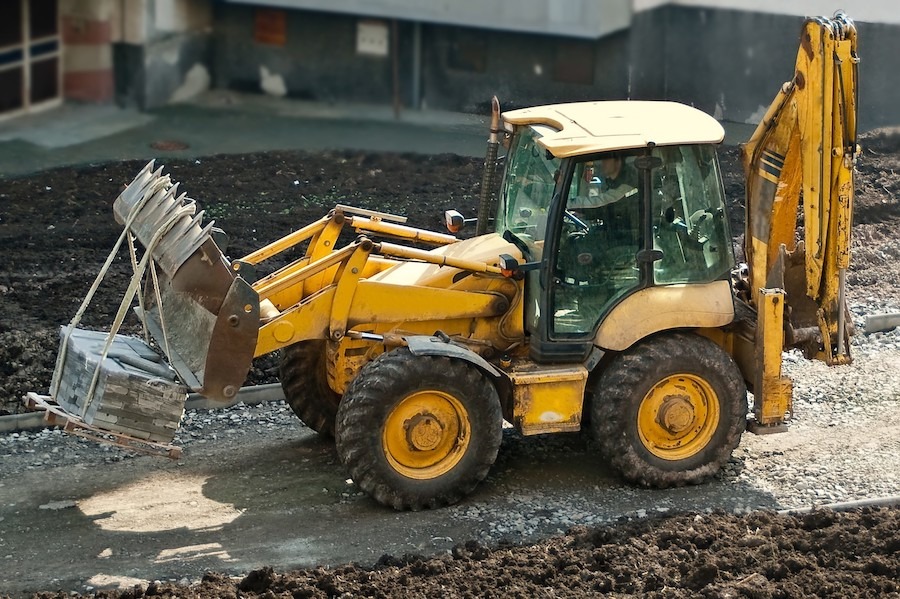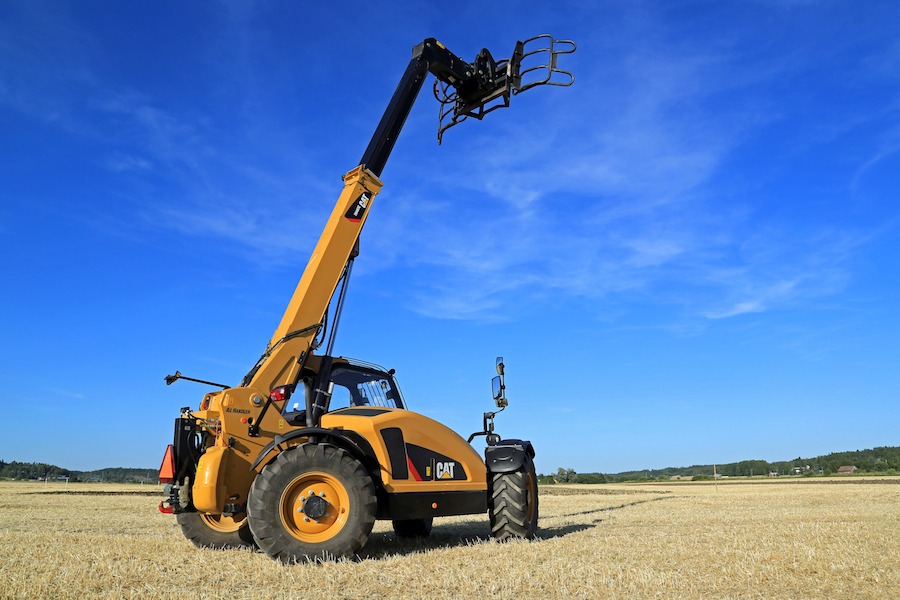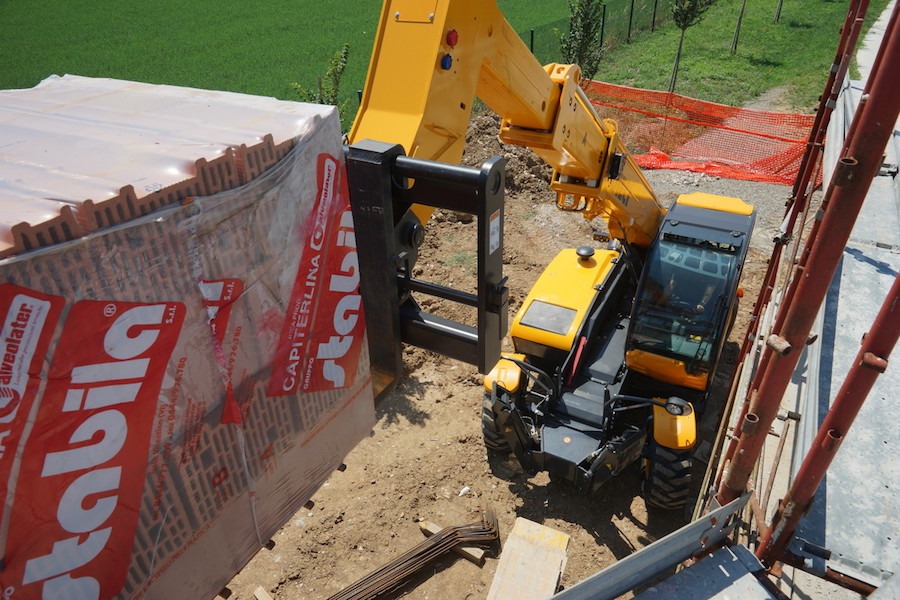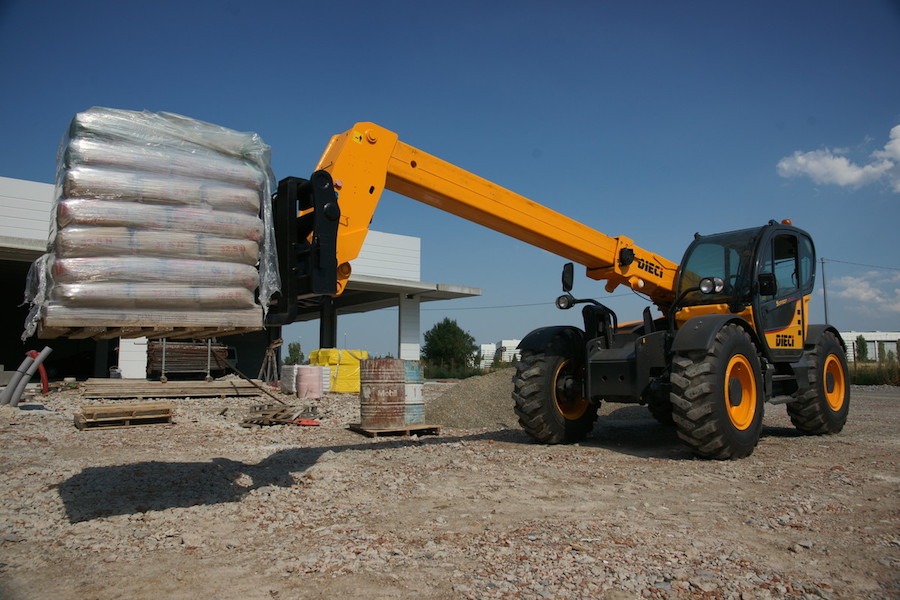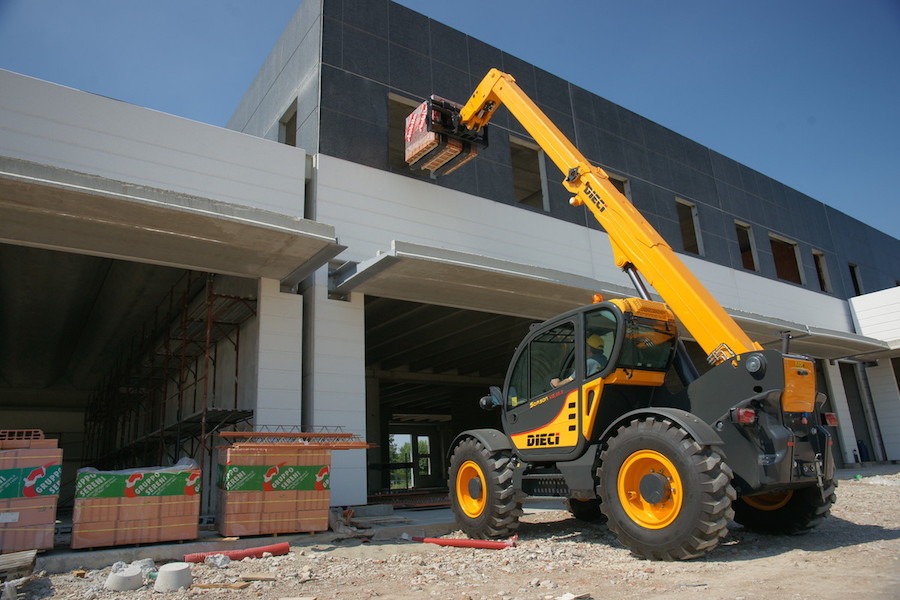Going higher and higher has motivated man to scale mountains, climb sand dunes, develop hang gliders, jet engines and skyscrapers and build houses on the highest point they can find. In 1967, Jackie Wilson sang his famous song about love lifting him higher and higher. The Moody Blues recorded their hit song “Higher and Higher” two years later, referencing space travel. Rising higher and higher next to and inside buildings has advanced tremendously from the humble wood ladder to powerful aerial and construction lifts that rise 150 feet or more and can carry tons [literally] of equipment and personnel with the push of some buttons and/or handles. Among the common lifts, some of which overlap by category, are:
- Cherry pickers or boom lift
- Scissor lift
- Mobile cranes or telehandlers
- Rough terrain lift
- Indoor atrium lift
- Aerial lift
- Vertical mast lift
- Forklift
- Spider lift
Lifts and AWPs
Scissor lifts are akin to cherry pickers and boom lifts, but the scissor variety, patented in 1963, is limited solely to vertical lifting and used mostly for light equipment or people. These are common on the masonry job site, in part for ease of operation and function. When working in any area with fumes, scissor lifts powered by gasoline are highly discouraged. Some run on electricity, and hydraulics and pneumatics has their own pros and cons. Pressurized hydraulic fluid can be affected by temperature changes, which can cause lift malfunctions. Any equipment down time impacts productivity and costs. Pneumatic lifts use compressed air pressure for going up and simply a release of pressure for coming down. There are hybrid models as well, which are especially attractive for indoor masonry work and fulfill that “green” component sought after by municipalities and contractors.
One person can manage a scissors lift and be the one lifted with or without materials, supplies or lunch. However, there is space for more than one, increasing efficiency and higher productivity. Additionally, the platform has a metal cage barrier around the sides, virtually eliminating stepping off and drastically reducing the incidence of falling off. Extension bridges are available to gain closer access to the work site. OSHA does not classify scissor lifts as aerial lifts, but everyone operating one must be thoroughly trained.
Mobile cranes and telehandlers are uniquely useful for being connected to a self-propelled base. Independent mobility is attractive for not needing a second vehicle to transport it around a building or down the road. They can fold down neatly like those transformer toys and today’s baby strollers, and roll onto and out of a job site conveniently. Cranes are in the heavy-duty class for weight capacity, and mobile cranes do not need as much space as a tower crane and are more quickly and easily set up and ready to work. For a job needing just a few lifts, even for tons of weight, mobile cranes and telehandlers can do the job with multiple axles and advanced hydraulic power.
Philippe Bisson, Sr. Business Development Manager of Manitou states, “Telehandlers are used for feeding the bricks to the masons, moving the material around, cleaning the area, the yard, and things like that.” These types of telehandlers work well, but are limited by height. This was solved by Manitou’s new rotating MRT telehandler.
The name seems to fit this new product, as it rotates 360º and the height capacity goes higher than regular telehandlers, Bisson confirms. This increases productivity on jobsites, even in tighter working spaces, since non-rotating telehandlers move back and forth. But the MRT telehandler can be straight instead of sideways and lift heavier weights than most. It can also go in any direction needed. This decreases the wait time, since pieces are picked up and placed very quickly.
Straight and telescopic booms extend in a straight line, and the articulating lift variation can have several elbows or joints, which permit horizontal and angle reaching out and over and around things. Because of the angles and extensions available to work higher up, the articulated lifts require a substantial base. The “spider” is so nicknamed for its many legs – hydraulic or manual – providing stability on the ground. Many spider lifts fold down to fit through doorways and small spaces.
“Typically, the most common sizes on a masonry job site for a standard fixed boom telehandler are these,” explains Brian DePaul of Dieci United States:
- 5,500 lbs. / 19ft. reach
- 8,000-9,000 lbs. / 44ft. reach
- 10,000-12,000 lbs. / 56ft. reach
“The Pegasus series of 360-degree rotational telehandlers are becoming more popular every day,” he adds. “These machines can be used as a telehandler, man basket or with a jib (in a small crane application) without requiring a crane operator license unless used with a winch.”
Aerial Work Platforms (AWPs) encompass all the extendable and articulating boom platforms, vertical towers and aerial ladders and are as useful as they can be dangerous. For this reason, most are laden with safety sensors. Sensors can detect tilting and off balance weight as well as weight when it exceeds the maximum recommended and automatically prevent the platform from going higher. Emergency stop buttons are usually found at the base and on the platform, and many have automatic checks like a voltmeter that monitors power and manual lowering levers.
Choosing a Lift
Like any piece of heavy construction equipment, lifts have their own set of moving parts that require routine inspection and attention. You may not be flying really high, but there’s still a checklist similar to a pilot’s pre-flight checks and your own vehicle’s annual inspection. Falling from three feet unexpectedly or 30 feet can be as lethal as falling from 3,000 or 30,000 feet. Maintenance tasks alone are a good reason to rent equipment for going higher and higher. The rental companies have the staff, knowledge, facility and tools to keep all their lift equipment in top running condition, and they perform all the maintenance required before a lift leaves their lot:
- Brakes
- Fluid levels and leaks
- Instruction and warning signs in place
- Wheels, tires, spider feet
- Battery and charger
- Alarms and horns
- Controls and handles
- Cable and wiring harnesses
- Guardrails
- Mechanical fasteners and locking pins
- And more.
Additionally, “it is very important to consider two obvious factors – capacity and reach – when deciding what kind of lift,” DePaul says. “I always suggest taking into account the physical dimensions of the machine’s footprint to ensure having the ability to properly haul the machine to and from job sites as well as any restrictions on the site itself. It is also wise to make sure you are comparing apples to apples when considering multiple brand options, like factors that impact productivity, quality and safety.”
Phillippe Bisson adds, “Masons also need to determine how far away they’re going to need to be working. It’s all about height, capacity, weight, and the distance between where they have to operate and the building they’re operating on.” The biggest challenge for masons when finding products is determining capacity and height needed for the project. Once this is determined, the product can be selected.
Another consideration is the job site – the ground surface, maneuverability if it’s necessary to move around a construction project with its own large footprint (like the Pentagon), hazards such as fumes or combustion and, of course, which type of lift will best serve your purpose. “It’s important to evaluate which style transmission would be most efficient for the application and circumstances,” DePaul continues. “I would also determine which style transmission would be most efficient for your application and circumstances. Dieci offers hydrostatic, power shift and VS (Vario-System) options to best suit the needs of our customer base and prospects. Dieci’s products are made with the highest quality components available on the market today. With a low boom pivot, the Dieci design philosophy offers greater versatility compared to most telehandlers on the market today. The machines are built rugged to withstand the elements that come with ground engaging applications. The operator has 360-degree visibility above the boom when carrying a load. All machines come standard with an anti-tipping device which minimizes the risk of injury related to machine tipping.”
Safety Concerns
The sheer size of these machines coupled with the height factor and intricacies of operating some of them make every safety measure imperative. Besides the obvious of falling, there are dangers of electric shock or electrocution, entanglement in cables or equipment, tipping over, hitting your head on things above and structural collapses. Falls are the leading cause of death in the construction industry, and the statistics are sobering. Almost every construction project from building a birdhouse to erecting a skyscraper begins with a plan, and every safety angle should be outlined and addressed. The birdhouse may be as simple as a saw guard, safety goggles and fully charged cordless drill, while the skyscraper entails much more, like:
- Personnel training
- Operator training
- Personal safety gear such as body harness, hard hat
- Precautions with string things like cables and wires
- Observe and obey all safety placards
- Weight limits and balance
- Using the equipment within its intended use
- Weather concerns like wind and lightning
- Overhead clearance
- Power lines and communications cables
- Emergency responses and procedures
It is in the planning stages that safety must be addressed. Then as the project progresses and lifts are scheduled to roll in, all personnel must be trained or re-trained and refreshed, including, but not limited to, everyone who will operate or be in or on the lift, plus support personnel on the ground and others on the job site.
You can even turn to an app for safety. SafeSite was developed by construction professionals and provides an on-the-spot digital capability to review checklists, engage in safety inspections and send forms anywhere to validate compliance. Supervisors can also input safety hazards and concerns and send them instantly and remotely to managers and officials for clarification and recommendations. There are many requirements for operation certification of various construction lifts, and only authorized, fully trained persons are allowed to run the big boom equipment. Scissors lifts and cherry pickers do not require certification, but thorough training is always advisable. “The Dieci product line of telehandlers is classified as class 7 rough terrain forklifts,” DePaul explains. “This would not require special certification or licenses, unless there is a special local ordinance otherwise or it is being used with a winch or direct line-style attachment.”
So, you can sing about it, fly it, drive it and built it high, but on the construction job site, you want the right lift equipment for the right job with the right personnel, the right operator, sufficient power and meticulous planning to assure safety, efficiency, productivity and, in the end, a mason’s job well done.
